By Cheryl Herrick
Farm and food stories tend to be about the confluence of the natural environment, human activity, and aspiration. But it’s not every story that’s also about cross-cultural connections and communication, farmland access, conservation, and food security among resettled refugee farmers. And all of these are part of what’s happening over in Colchester with Janine Ndagijimana’s new greenhouse that she’s using to grow new varieties of African eggplant.
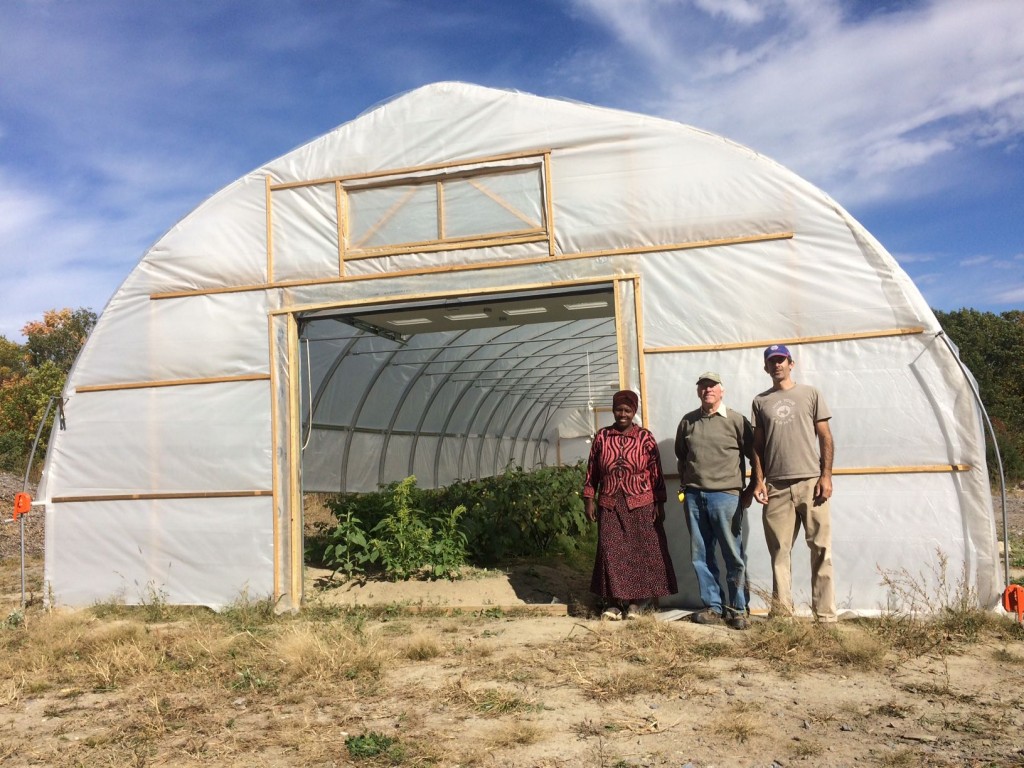
Finding opportunities to help new farmers be successful in a complicated field of work is something of a specialty for Ben Waterman of the UVM Extension Center for Sustainable Agriculture. In years of work with resettled refugee farmers, Ben realized there was a fundamental gap in access to basic support services. “Every native English-speaking American farmer knows about the help that USDA programs like the Farm Service Agency and the Natural Resources Conservation Service,” he says. “But resettled refugee farmers didn’t know.” He approached the USDA Office of Advocacy and Outreach (OAO) with the idea for a one-year grant project: introducing New Americans to programs that can provide critical financial and conservation support when it’s needed.
“USDA is making it a special priority to reach out to socially disadvantaged and under served groups to help their businesses grow, and to help them implement practices that boost food access and environmental sustainability. Here in Vermont, it was a clear need and seemed like the right time,” Ben says.
Luckily, the funding partners agreed. And with the funding in place, Ben worked with local partners at Association of Africans Living in Vermont, local USDA representatives and local farmers as “actors” to develop culturally-adaptive videos to introduce farmers to the availability of programs. Filmed by UVM Extension’s Across the Fence program, the videos are short introductions with audio tracks in English, Nepali, May May, and Kirundi. A series to introduce Extension’s agricultural support services soon followed. The project also involved workshops and follow up consultations with farmers to direct them to the most appropriate service.
Ben’s belief that resettled refugee farmers could benefit from access to this knowledge quickly proved true. Nearly as soon as she learned about the available resources, Farmer Janine, who’s been working with the Center’s New American Farmer project for several years, was eager to sign up. Together with Ben, she submitted an application for funding to construct a “high tunnel” (greenhouse) on land she’s leasing from Colchester farmer Gene Button. When they received word that the project was approved, they started construction.
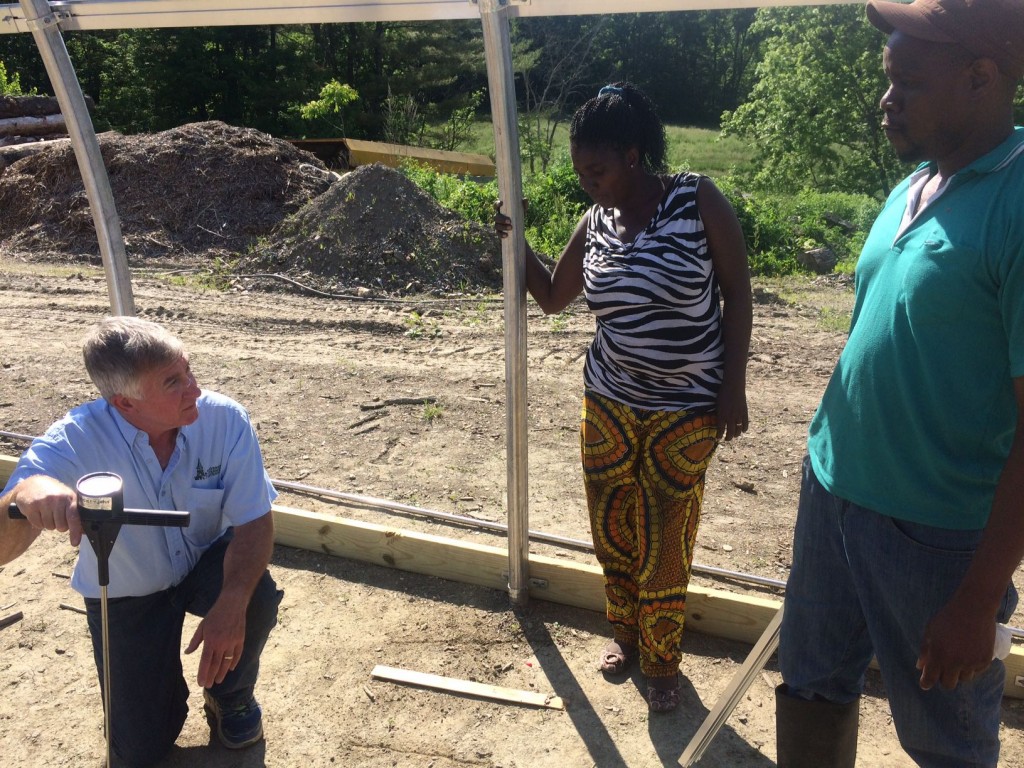
UVM Extension Vegetable and Berry Specialist Vern Grubinger (left) meets with Janine and husband Faustine to discuss soil fertility and greenhouse layout. His tool is a penetrometer, which measures relatives soil compaction. Results from the probe and soil tests helped him make specific recommendations for improving soil fertility to support the crops she’ll grow.
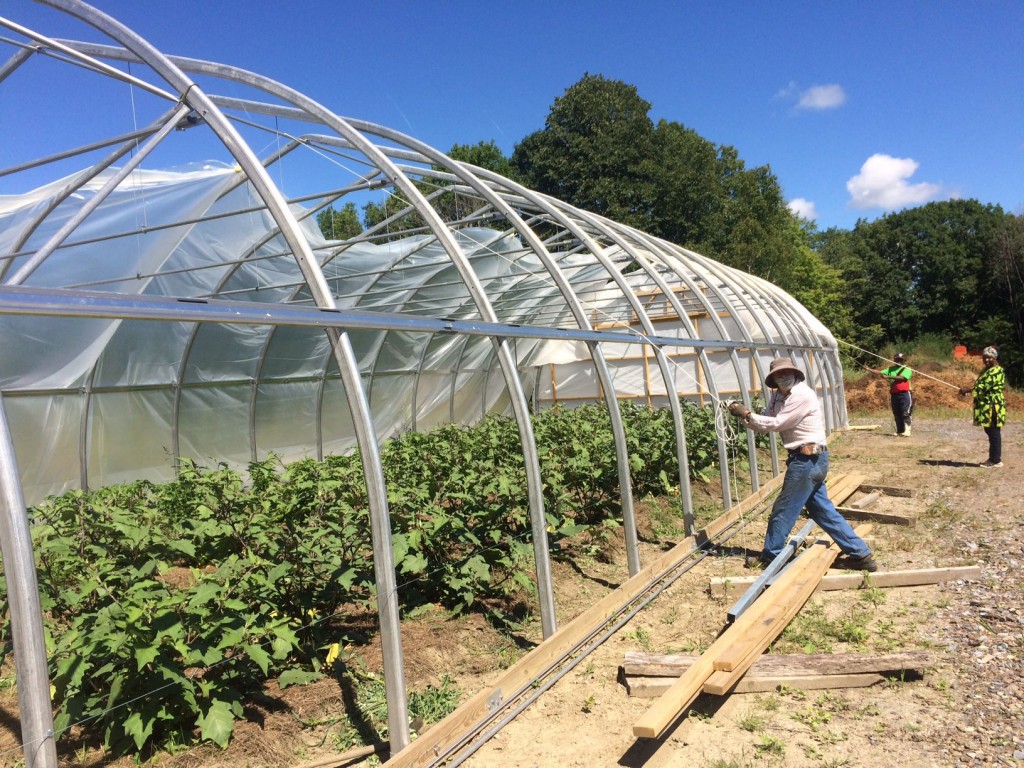
With hundreds of African eggplant (ntori) seedlings already transplanted, the group works to get the plastic sheeting over the hoops to enclose the structure.
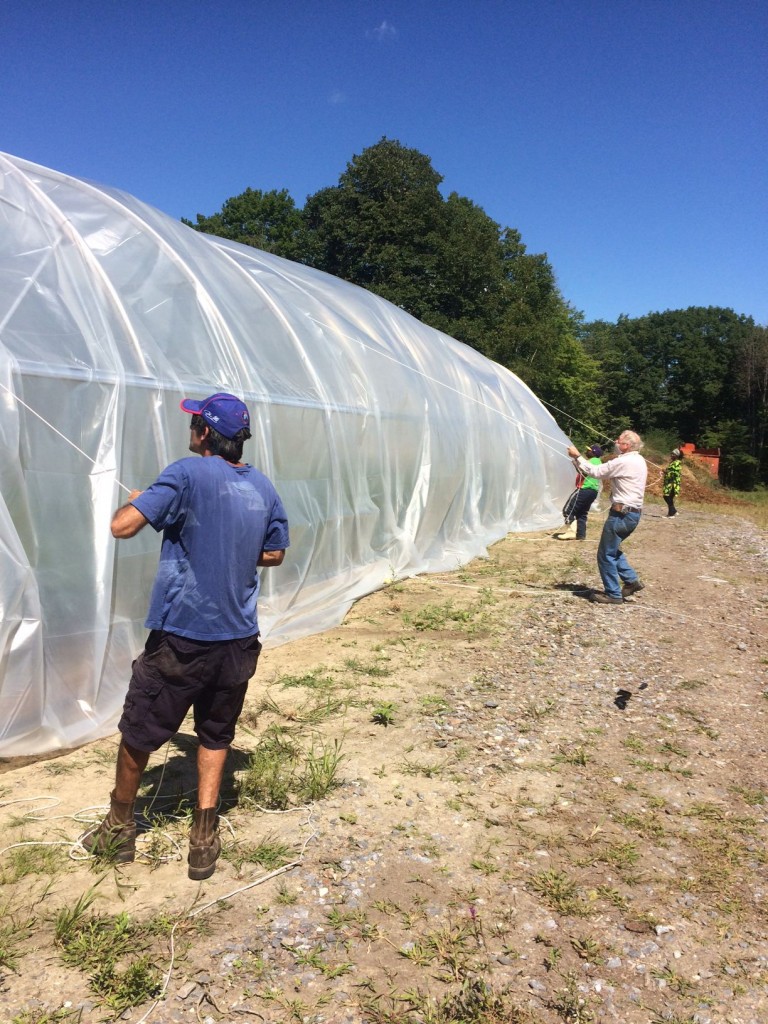
A hard day and an important one! Center for Sustainable Agriculture New American Farmer Program Coordinator Ben Waterman, landowner Gene Button, Faustine, and Pious pull the plastic membrane over the hoops.
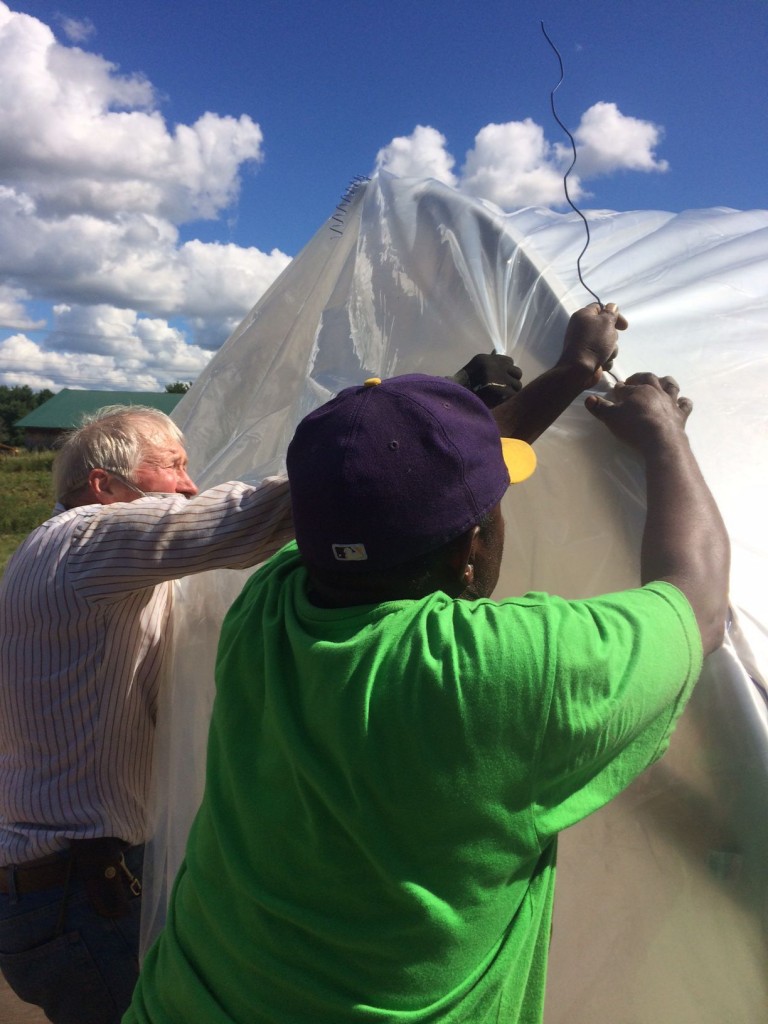
Landowner Gene and community member Pious are here on a scaffold 10 feet off the ground, battening down the plastic using “wigglewire.” This is a critical step that has to be done quickly to make sure the plastic stays attached in the wind.
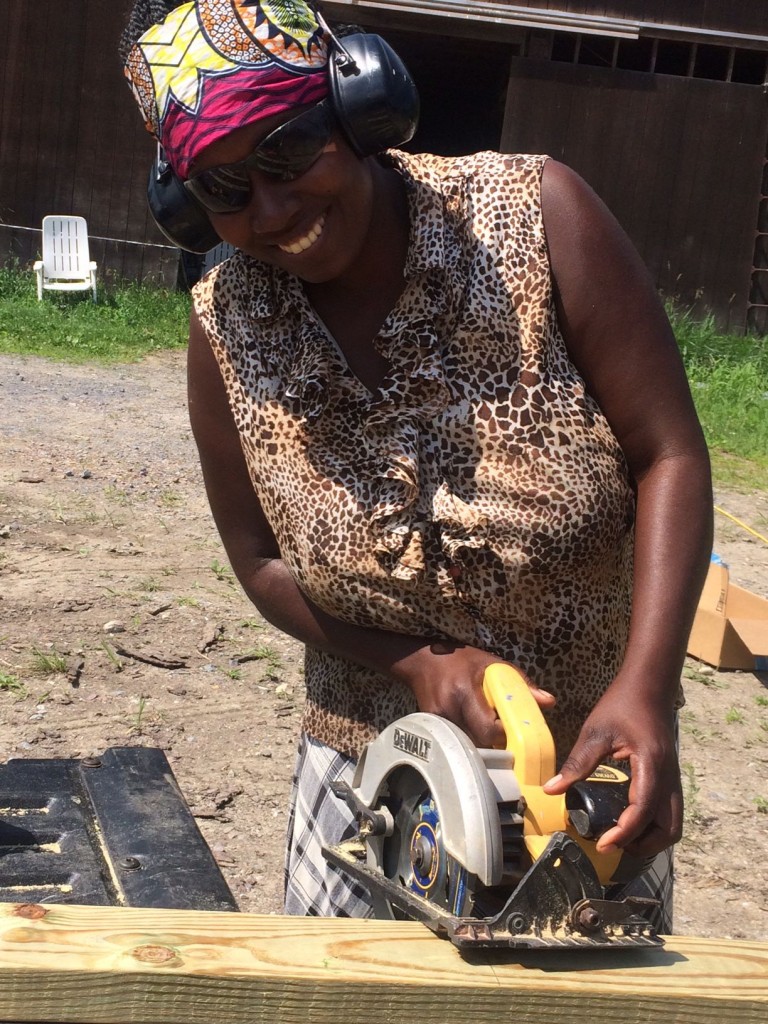
Through the construction process, farmer Janine got to develop some solid carpentry, construction, and power tool skills. Here she is cutting pressure-treated timber for the interior framing that’s installed after the metal hoops are up and plastic cover is in place.
What does the greenhouse mean to Janine? “My business now provides for me and for my family. But in the future I want it to grow and become a much bigger business,” she says. “Having the greenhouse is going to help a lot in terms of growing eggplants and other things that can be in there for longer than they would be in the field. Now I can grow different things like hot peppers, and different kinds of eggplants that my customers want.”
She adds, “In the next growing season, I’ll have different kinds of eggplants so I can sell more products than before. And in the future, I’d like to have as many greenhouses as possible—depending on how the market is doing. In having more greenhouses, that would allow me to produce seeds for people who want to grow their own plants for the varieties they want.”
For more information
- UVM Food Feed blog post about the publication of the UVM Extension & AALV-published Global Food, Local Food Guide
- Recipes to use African eggplant
-Cheryl Herrick manages communications and the office at the Center for Sustainable Agriculture and lives, writes, and cooks in Burlington.










